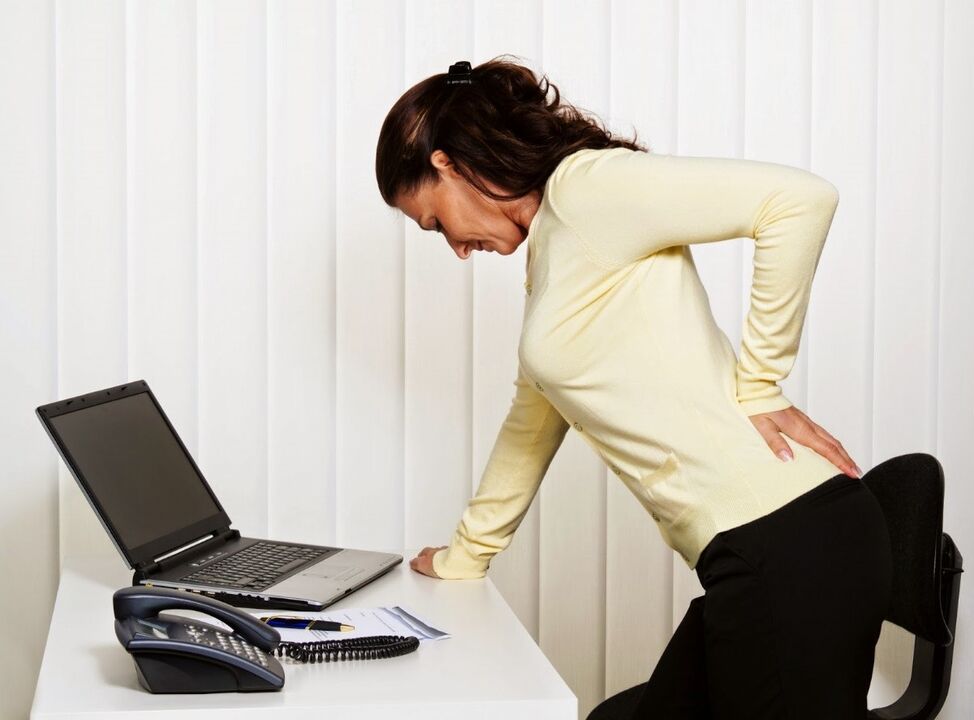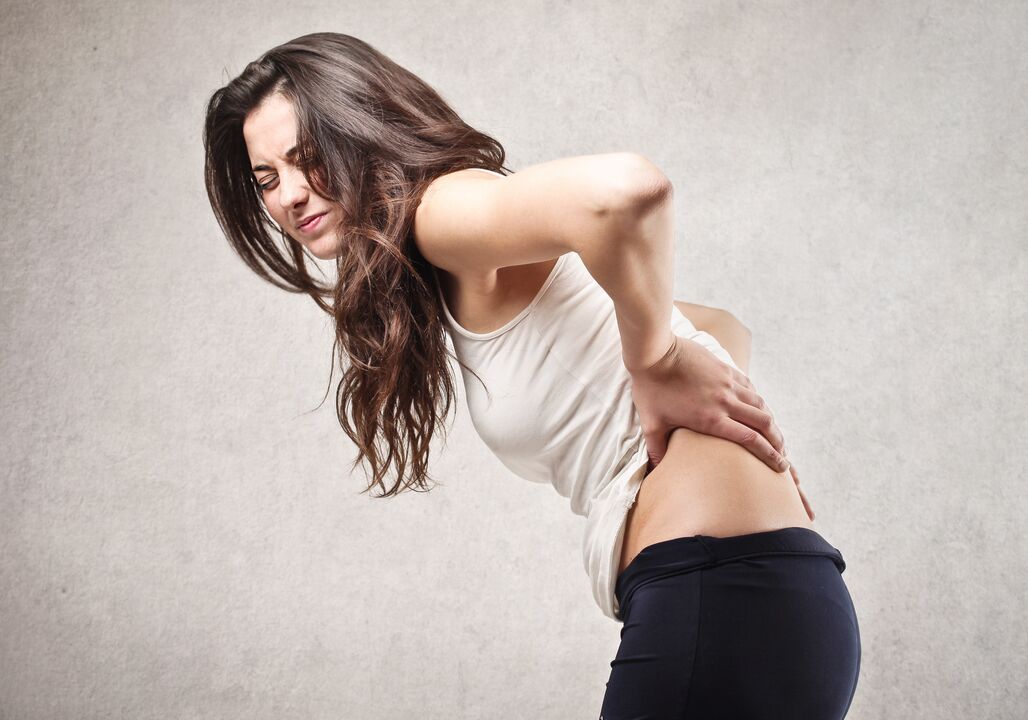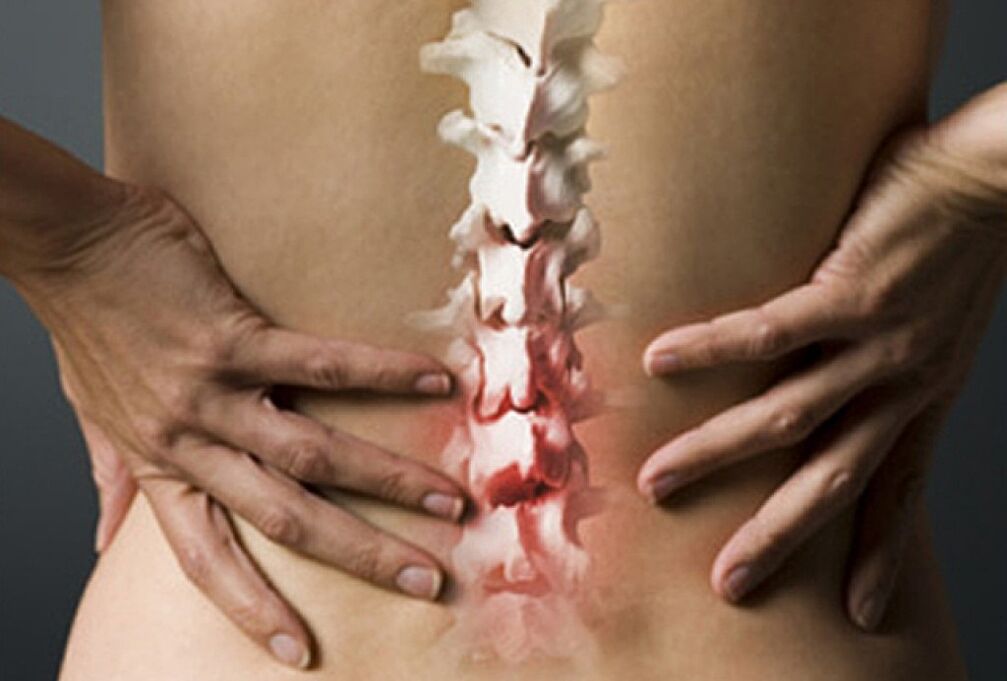
Osteochondrosis is a common disease of the spine. The lower back suffers mostly due to the peculiarities of the lifestyle, therefore the symptoms of osteochondrosis of the lumbar spine are more common than others. The pathology is equally dangerous for both men and women, regardless of age. Patients with the disease wear corsets, suffer during pregnancy. Diet and exercise become essential.
The disease is highlighted in a separate section of the 10th revision of the International Classification of Diseases (ICD-10) and refers to deforming dorsopathy (ICD-10 M42-43). The code for osteochondrosis of the spine is M42 according to ICD-10. There are such options for ICD-10:
- Juvenile osteochondrosis - M42. 0 according to ICD-10.
- Osteochondrosis in adults - M42. 1 according to ICD-10.
- Unspecified forms - M42. 9 according to ICD-10.
If earlier the disease spread to people over 30 years old, then recently there was a trend towards the pathology of the younger generation. It is related to stress and long-term computer use, a passive lifestyle.
The lower part of the back is always exposed to a high load due to both its motorized nature and the load of body weight. Women suffer a lot during pregnancy, they are people with a history of many lumbar spine injuries, and they ignore such a factor as exercise. In addition, when studying the causes of intervertebral hernia, damage to the sciatic nerve, the main factor can be highlighted - long-term osteochondrosis.
Causes and stages of pathology
All causes leading to pathology can be divided into external and internal causes. The first ones are related to various effects of external factors. People who lead a sedentary lifestyle and are overweight are prone to osteochondrosis. In addition, there are predisposing factors:
- professions related to long periods of sitting;
- hypothermia;
- weakening of the body's defenses, which is related to stress and overload.
Internal causes are based on genetic predisposition and various diseases. In the case of endocrine diseases, the restoration of bones and muscle tissue and their nutrition are interrupted. This condition can be observed with advancing age and with a genetic predisposition, especially if the medical history indicates spinal injuries at a young age.

Abnormalities in the structure of the spine accelerate the occurrence of osteochondrosis, if not treated, the disease develops rapidly. The most significant conditions are kyphosis and scoliosis. The medical history also indicates that the most common cause of the disease is a spinal injury.
The disease has 4 stages of progression. In the first stage, there are no serious disturbances in the nutrition and structure of the spinal discs. The symptoms are mild. They can be easily removed with painkillers. During this period, the disease can be cured as quickly as possible, the main thing is not to heat up and not strain your back. Diet and rehabilitation help a lot.
Osteochondrosis often begins to appear during pregnancy, if not treated, it quickly progresses to the next stage. The history of the disease makes the corset an effective drug in the progression of the disease.
The second stage is characterized by protrusions and vivid clinical manifestations. Treatment becomes difficult, exacerbations occur more often. For girls, the disease should be treated before pregnancy to avoid complications due to salt deposits and vertebral displacement. Problems may arise with going to the toilet, then special candles will help. Braces, diet, daily exercise, and ERT can also be effective.
The third and fourth stages are dangerous with the appearance of intervertebral hernias, complications and disturbances in the work of internal organs. Only diet and massage do not help. Sometimes the only way out in the fight against the disease may be surgical treatment. In the future, the person will have to wear a brace and recover for a long time.
Symptoms
Signs of lumbar osteochondrosis begin to appear in the first stage of the disease, when sharp pain appears in the lumbar region. The exacerbation first passes quickly and does not interfere with the normal functioning of the working capacity. During pregnancy, the woman constantly feels discomfort and muscle tension.
As the disease progresses, exacerbations occur more often, but can be removed with painkillers. Symptoms of pain linger and hurt. If the nerve fibers are affected, the pain radiates to different parts of the body. It can be a leg, different areas of the buttocks and back. Increased pain occurs when you stay in one position for a long time, make sudden movements or lift weights. A characteristic sign of osteochondrosis may appear - back pain.
In addition to the feeling of pain, the muscular ligament suffers. The muscles of the back are constantly tense and painful when pressed. Over time, the exacerbation does not go away, the patient experiences unbearable pain, which worsens even with slight movement, coughing or sneezing. During pregnancy, weight gain occurs, which worsens the general well-being of a woman and causes constant symptoms of osteochondrosis.
In extreme stages, innervation is interrupted and the spinal cord is affected. The muscular ligament cannot cope with the protection, the vertebrae are destroyed, and an intervertebral hernia develops. There are malfunctions in the work of the intestines, stomach, and urinary system. Men have problems with potency. Constant pain and symptoms of poisoning worsen a person's well-being. The medical history of a patient with such disorders often leads him to the operating table.

Treatment
Diagnostics are performed to select the appropriate treatment for osteochondrosis. The patient's medical history and complaints are studied in detail. Exacerbation allows more thorough identification of the image using diagnostic techniques. We update the patient's medical history with new symptoms. An X-ray is ordered to examine the spine. During pregnancy, X-rays cannot be done in the same way as wearing a corset.
There are other diagnostic methods. This can be magnetic resonance or computed tomography. An ultrasound examination is performed to examine the internal organs, especially if the medical history indicates various pathologies.
Treatment is selected individually in each case and should be comprehensive. There are certain principles that help to cure the disease. These are pain-relieving drugs, a diet to normalize the functioning of internal organs. Also, you should not heat the affected area.
During pregnancy, the first thing you should worry about is the health of the fetus. During the running course, in addition to the main course of therapy, it is also necessary to wear a corset. In case of impaired bowel function, special suppositories are used. Also, you can't warm up your lower back muscles when you're aggravated. The diet is prescribed after consultation with the gynecologist. Charging must be special and at a specific time.
The treatment is primarily aimed at eliminating the symptoms and restoring the physiological functions of the spine.
In case of pain, it is necessary to take NSAIDs, antispasmodics, pain relievers. The necessary remedy is prescribed by the doctor. With the help of novocaine blockade, you can relieve severe pain.
Foods harmful to the liver and kidneys and heavy are excluded from the diet. Do not abuse alcohol or cigarettes. In order to cure the disease, you can combine medicines and alternative therapeutic methods at the same time. Charging must enter the rhythm of life. It is impossible to heat the injured area during exacerbation and at the beginning of treatment. The diet should be prescribed for a long time.
Effective massage, manual therapy, physiotherapy and daily exercise - this will help you get rid of the disease and always stay in shape.


























